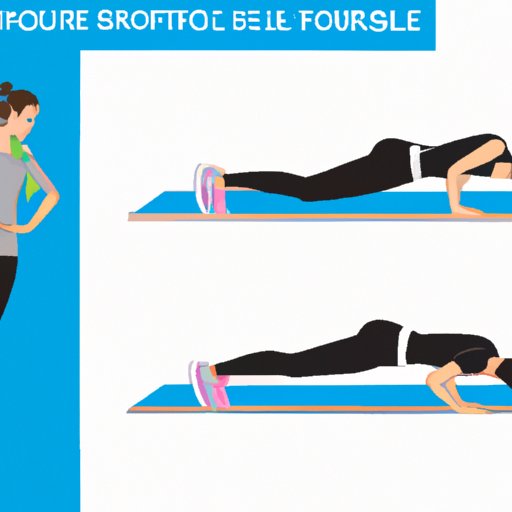Introduction
A bridge exercise is a type of bodyweight exercise that can be used to strengthen the core muscles and improve posture, balance, and stability. It is a relatively simple exercise that can be done anywhere, anytime, with minimal equipment. This article will provide a comprehensive guide to bridge exercises, including what they are, the benefits they offer, how to incorporate them into your workout routine, and the science behind them.

A Comprehensive Guide to Bridge Exercises
Bridge exercises are a great way to build core strength, stability, and improve posture and balance. They can be done as part of a full-body workout routine or as an isolated exercise. Here is a comprehensive guide to bridge exercises.
How to Incorporate Bridge Exercises Into Your Workout Routine
Bridge exercises can be incorporated into any workout routine. For beginners, it is best to start with one set of 10-15 repetitions and gradually increase the number of sets and reps as you become more comfortable with the exercise. It is important to maintain proper form throughout the exercise to maximize the benefits and reduce the risk of injury.
An Introductory Primer on Bridge Exercises
Bridge exercises are a type of bodyweight exercise that target the core muscles, including the glutes, hamstrings, abdominals, and lower back. The exercise involves lying on your back with your feet flat on the ground and your knees bent. You then lift your hips off the ground and hold the position for a few seconds before returning to the starting position.
Bridge Exercises for Core Strength and Stability
Bridge exercises are a great way to strengthen the core muscles and improve stability, posture, and balance. They can also help to reduce back pain and protect the spine from injuries. Additionally, bridge exercises can help to improve coordination and flexibility.
Different Variations of Bridge Exercises
There are many different variations of bridge exercises that can be used to target different muscle groups and challenge the body in new ways. Some common variations include single-leg bridges, hip thrusts, alternating bridges, and weighted bridges.
The Science Behind Bridge Exercises
Bridge exercises offer a variety of anatomical and physiological benefits. Studies have shown that bridge exercises can help to activate multiple muscle groups at once, including the glutes, hamstrings, abdominals, and lower back. Additionally, bridge exercises can help to improve posture and balance by strengthening the core muscles and improving joint mobility.
Muscular Activation During Bridge Exercises
Studies have shown that bridge exercises can activate multiple muscle groups simultaneously, including the glutes, hamstrings, abdominals, and lower back. Additionally, studies have shown that bridge exercises can help to improve muscular endurance and strength in the core muscles.
Improved Posture and Balance Through Bridge Exercises
Bridge exercises can help to improve posture by strengthening the core muscles and improving joint mobility. Additionally, bridge exercises can help to improve balance by activating the stabilizing muscles around the joints.
Conclusion
Bridge exercises are a great way to build core strength, stability, posture, and balance. They can be done as part of a full-body workout routine or as an isolated exercise. Bridge exercises can help to activate multiple muscle groups at once, improve posture and balance, and reduce back pain. By incorporating bridge exercises into your workout routine, you can reap the benefits of improved core strength, stability, posture, and balance.


